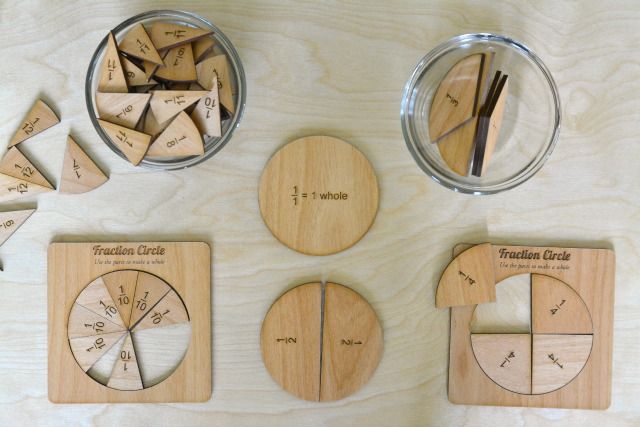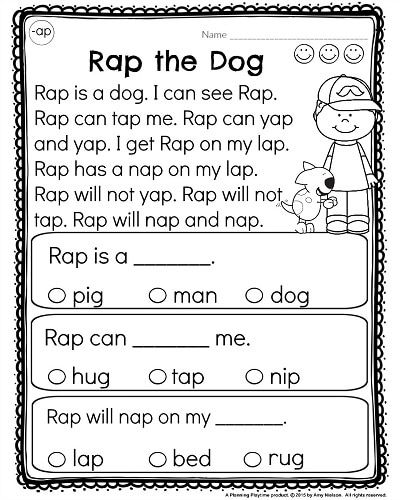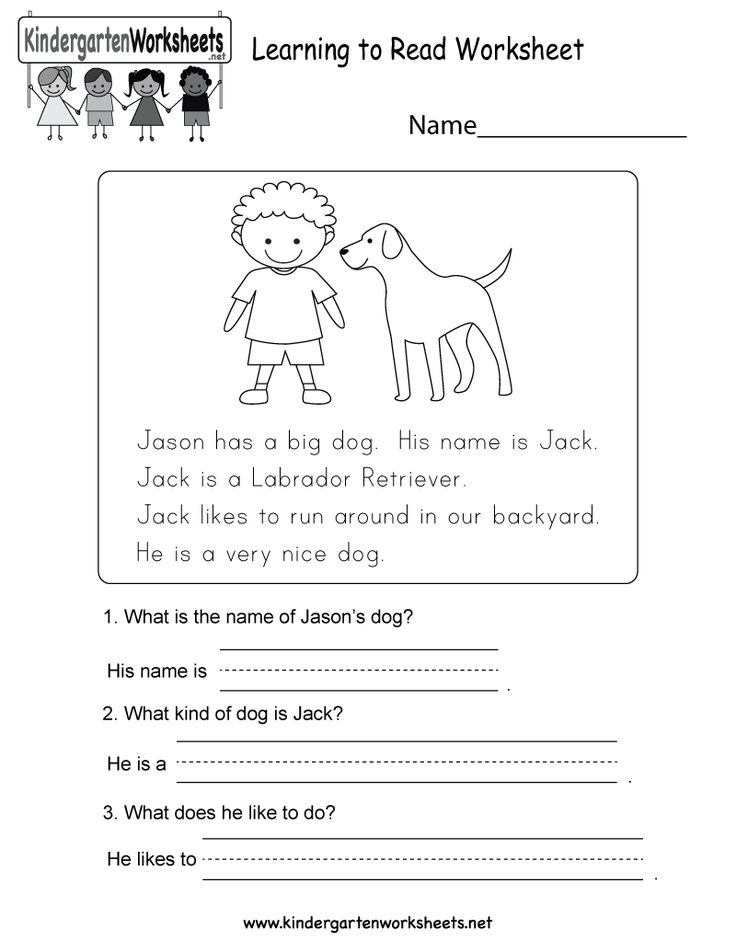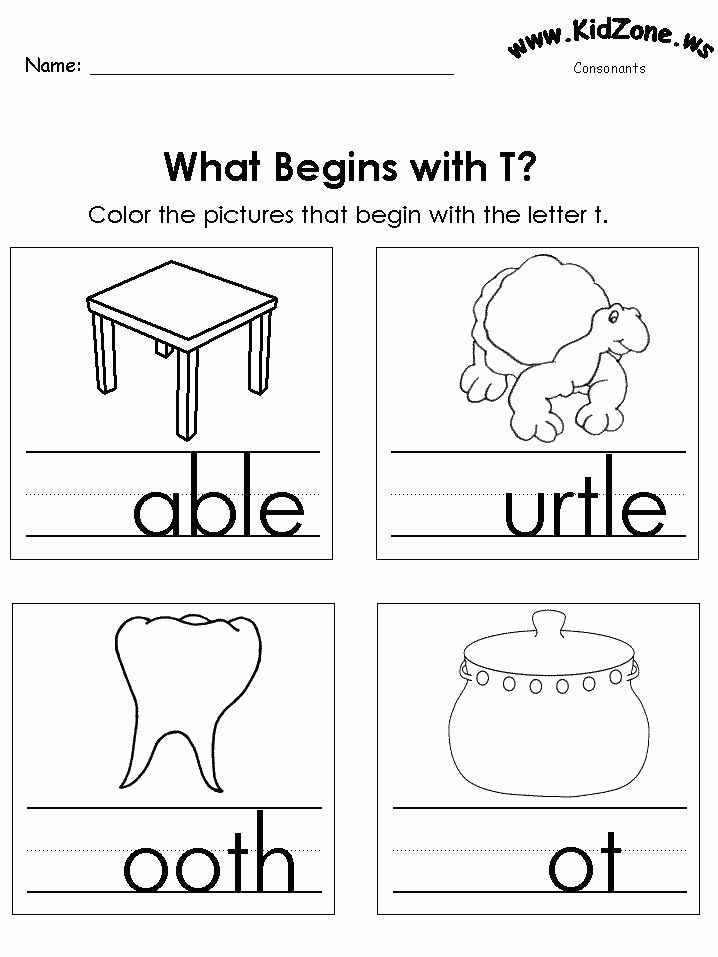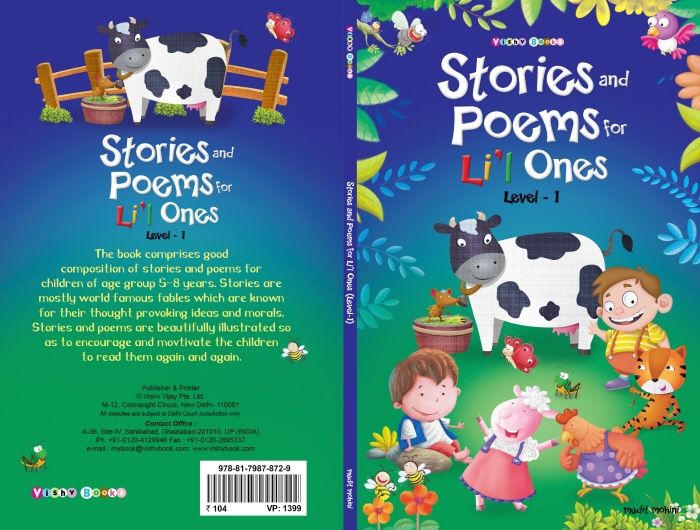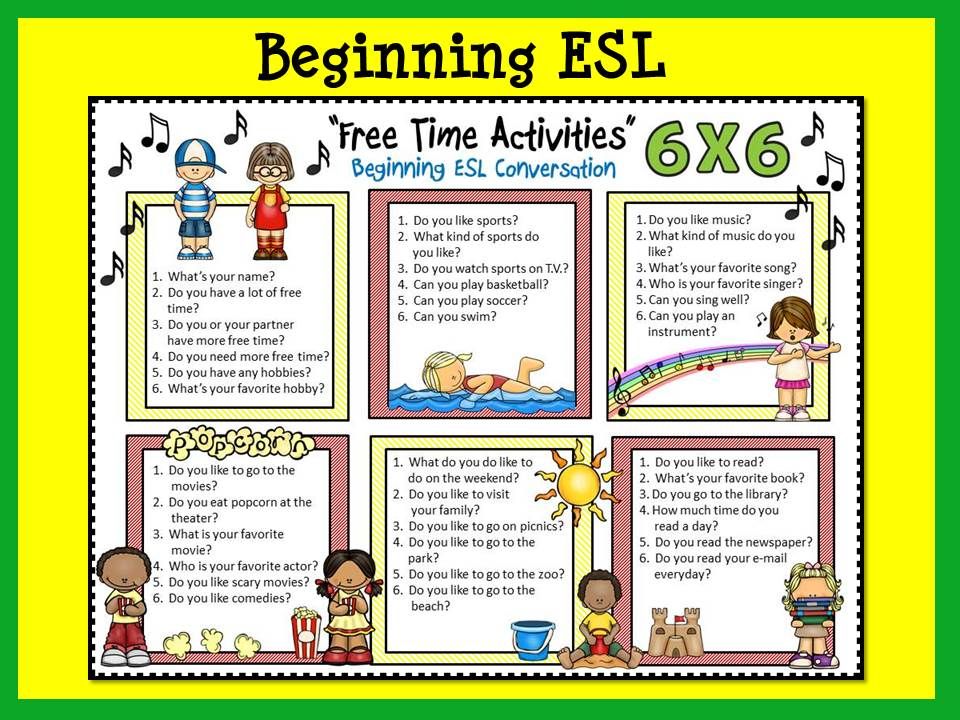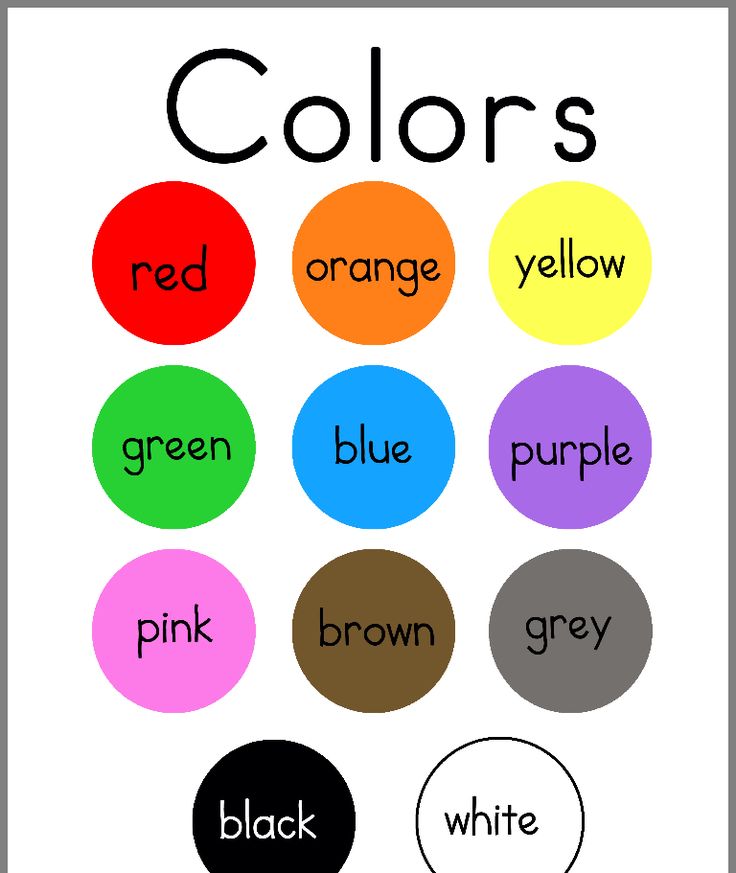Long and short vowel sound symbols
Short Vowels and Long Vowels Lesson Plan
Objectives:
- Students will learn how to recognize and remember the sounds of both short vowels and long vowels.
- Students will be able to produce the sounds of the short vowels and long vowels in isolation.
About the Concept:
Vowels in the English language can represent a variety of sounds. The first step in mastering the various vowel sounds is learning the difference between short vowels and long vowels. Of the two, the long vowels are easier for children to learn because long vowels basically sound the same as the letter names. For example, long a sounds like the a in able, long
o sounds like the o in over, and long u may sound like the u in use or the u in blue. Children generally find it more challenging to learn the short vowel sounds because many of them sound so similar to each other: The short i in pig sounds very similar to the short e in peg. The short o in pop sounds a lot like the short u in pup. Before children can learn the rules for spelling and reading short and long vowel sounds, they must be able to recognize and produce these sounds reliably. The short vowels can represented by a curved symbol above the vowel: ă, ĕ, ĭ, ŏ, ŭ. The long vowels can be represented by a horizontal line above the vowel: ā, ē, ī, ō, ū. Here are some examples of short vowel words: at, egg, it, ox, up.
 Here are some examples of long vowel words: ate, each,
ice, oak, use. When students have learned to recognize the vowel sounds in Oh, Do You Know?, they can learn short vowel spelling patterns through the Volume 1 song Spelling Families. Long vowel spelling patterns are covered in the Volume 1 songs Talking and Walking and Silent E. Some other songs that teach students about vowel spelling patterns are the Volume 2 songs, Spelling Choices, Cool Vowels, The Right Diphthong, and I Before E, and the Volume 3 songs Why Does Y? and Drop It!.
Here are some examples of long vowel words: ate, each,
ice, oak, use. When students have learned to recognize the vowel sounds in Oh, Do You Know?, they can learn short vowel spelling patterns through the Volume 1 song Spelling Families. Long vowel spelling patterns are covered in the Volume 1 songs Talking and Walking and Silent E. Some other songs that teach students about vowel spelling patterns are the Volume 2 songs, Spelling Choices, Cool Vowels, The Right Diphthong, and I Before E, and the Volume 3 songs Why Does Y? and Drop It!.
Materials:
- Sing Your Way Through Phonics Volume 1 CD, Tracks 9 and 10 (Listen to audio sample)
- Sing Your Way Through Phonics Volume 1 Mini-Charts (pp. 41-46)
- Letter cards for a, e, i, o, and u.
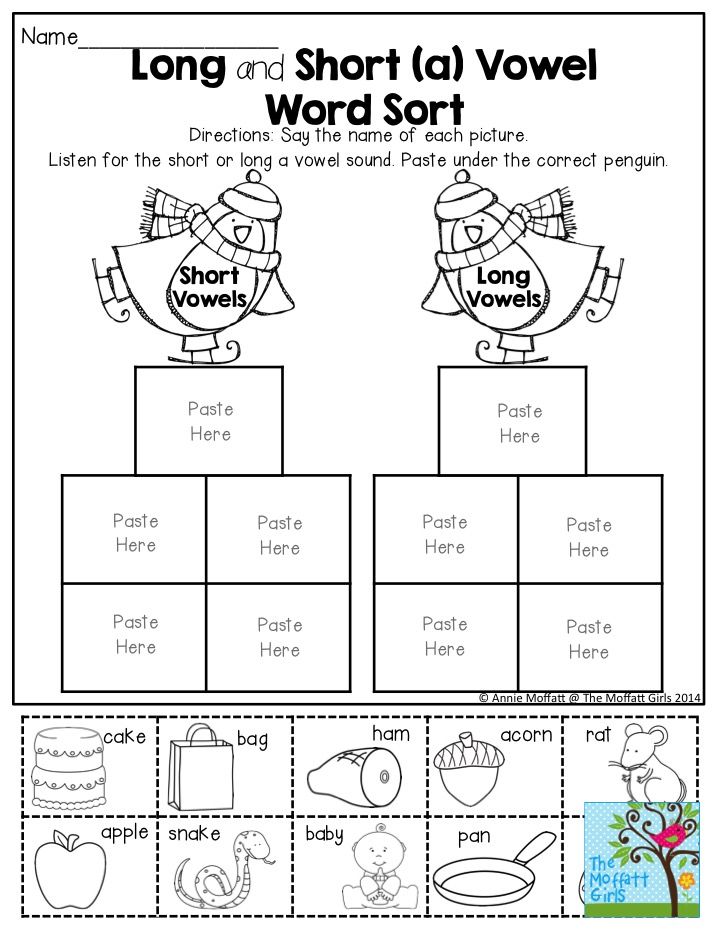
- Chart displaying long vowel words and pictures (ex. ape, eagle, ice cream, ocean, unicorn)
- Chart displaying short vowel symbols, words and pictures (ex. alligator, eggs, iguana, octopus, umbrella)
- Optional: Cards with medial-position short vowel pictures (ex. hat, cat, hen, pen, fish, dish, dog, log, gum, drum)
- Optional: Cards with medial-position long vowel pictures (ex. snake, rake, sheep, sleep, kite, night, goat, coat, flute, suit)
Note: If you do not have the CD or Mini-Charts, you can still teach this short vowels and long vowels lesson plan using the folk tune listed on the Oh, Do You Know? Song Lyrics page. You can create your own mini-charts using the words in bold print letters in each verse of the Song Lyrics.
Find out more about Sing Your Way Through Phonics products.
Order our cost-saving Volume 1 Combo online.
Procedure:
- Review the letter names of the vowels: a, e, i, o, u, and sometimes y.
 Say, "Today, we are going to learn about how vowels can sound in words. We will focus on a, e, i, o, and u."
Say, "Today, we are going to learn about how vowels can sound in words. We will focus on a, e, i, o, and u." - Display letter cards a, e, i, o, and u. Say, "Sometimes it is easy to hear the vowel in a word. Can you tell me what vowel you hear in the word use (u), in the word eat (e), in the word ape (a), in the word ice (i), in the word oak (o)?" Point to the correct letter card, each time the children answer correctly. Say, "It is easy to hear the vowels in these words because they actually say their own names. When vowels sound just like their own letter names, we call these long vowels."
- Display the chart of the long vowels with pictures and symbols.
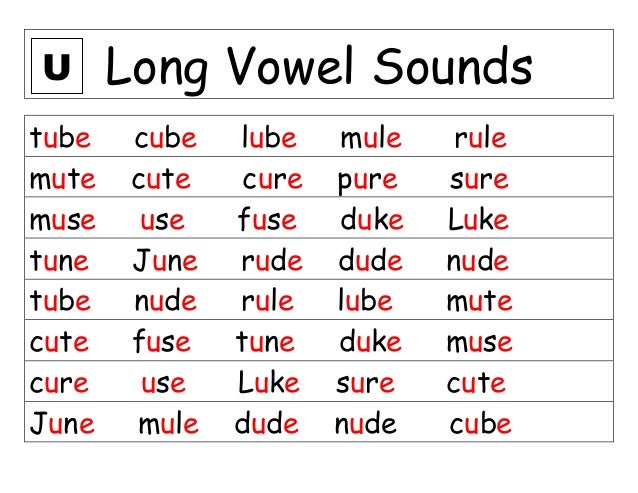 Point to the long vowel chart and say, "We can draw a long line
over the vowel if we want to show that it has a long sound. Ask the students to draw this symbol in the air. " Point to ā, and say, "Long a sounds like the beginning of ape." Say together, "Long ē sounds like the beginning of eagle. Long ī sounds like the beginning of ice cream. Long ō sounds like the beginning of ocean. Long ū sounds like the beginning of unicorn."
Point to the long vowel chart and say, "We can draw a long line
over the vowel if we want to show that it has a long sound. Ask the students to draw this symbol in the air. " Point to ā, and say, "Long a sounds like the beginning of ape." Say together, "Long ē sounds like the beginning of eagle. Long ī sounds like the beginning of ice cream. Long ō sounds like the beginning of ocean. Long ū sounds like the beginning of unicorn." - Say, "Sometimes a vowel has a different sound and does not say its own name." Show the chart with the short vowel words and pictures. Say, "This chart shows words that have a short vowel sounds."
- Point to the symbols on the short vowel chart and say, "We can draw a short smile over the vowel to show that it has a short sound.
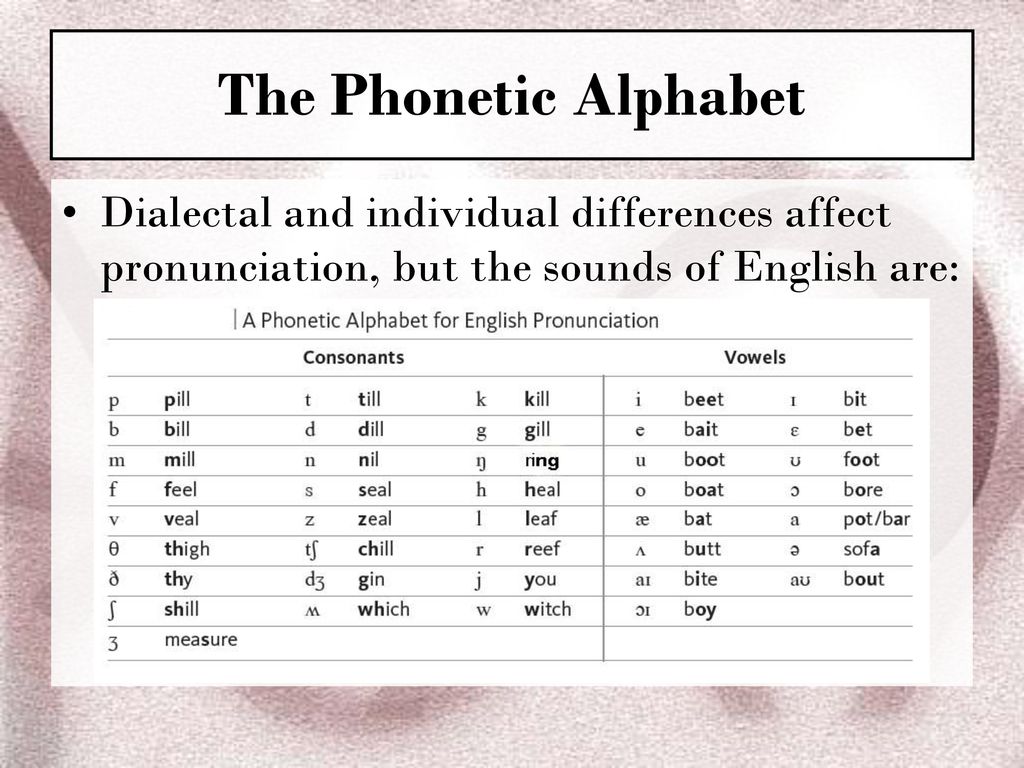 " Ask the students to draw this symbol in the air. Say, "Let's practice the short vowel sounds saying just the beginning of each word on the chart. Can you say just the beginning of the word alligator? (/ă/), the beginning of the word eggs? (/ĕ/), the beginning of the word iguana? (/ĭ/), the beginning of the word octopus? (/ŏ/), the beginning of the word umbrella?" (/ŭ/)
" Ask the students to draw this symbol in the air. Say, "Let's practice the short vowel sounds saying just the beginning of each word on the chart. Can you say just the beginning of the word alligator? (/ă/), the beginning of the word eggs? (/ĕ/), the beginning of the word iguana? (/ĭ/), the beginning of the word octopus? (/ŏ/), the beginning of the word umbrella?" (/ŭ/) - Say, “Now we are going to listen to a song about the vowel sounds to help us remember them. At first, the singers will sing about all the short vowel sounds. Next, the singers will sing about all the long vowel sounds. See if you can think the sounds for each vowel before you hear it in the song.” Play Sing Your Way Through Phonics Volume 1 CD, Track 9--Oh, Do You Know? and point to the Mini-Charts on pages 42-46.
- Point to the symbols on the chart and say, "Did you notice that the short smile and the long line can be written over either capital or lowercase letters? Let's listen to this song again and see if you can answer the singer's questions.
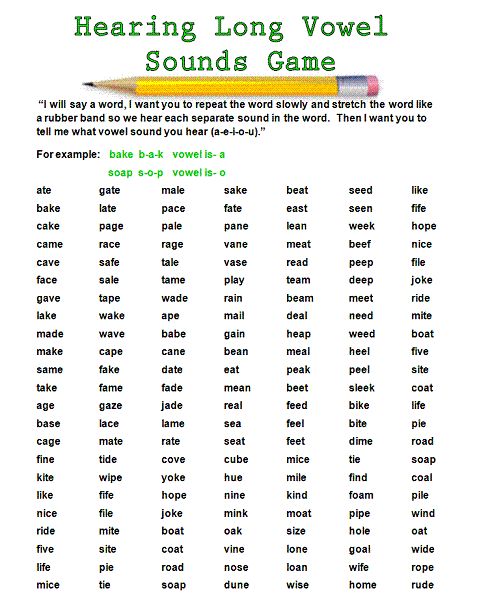 Re-play Sing Your Way Through Phonics Volume 1 CD, Track 9--Oh, Do You Know? Students will hear the question, "Oh, do you know the short a sound, the short a sound, the short a sound?" They should sing the answer, "Oh, yes I know the short a sound. The short a sound is /ă/." For the rest of the questions in the song, students should sing the aswers, "The short e sound is /ĕ/...The short i sound is /ĭ/...The short o sound is /ŏ/..., The short u sound is /ŭ/..., The long a sound is /ā/..., The long e sound is /ē/..., The long i sound is /ī/..., The long o sound is /ō/..., The long u sound is /ū/.
Re-play Sing Your Way Through Phonics Volume 1 CD, Track 9--Oh, Do You Know? Students will hear the question, "Oh, do you know the short a sound, the short a sound, the short a sound?" They should sing the answer, "Oh, yes I know the short a sound. The short a sound is /ă/." For the rest of the questions in the song, students should sing the aswers, "The short e sound is /ĕ/...The short i sound is /ĭ/...The short o sound is /ŏ/..., The short u sound is /ŭ/..., The long a sound is /ā/..., The long e sound is /ē/..., The long i sound is /ī/..., The long o sound is /ō/..., The long u sound is /ū/. " Teachers can point to the children to cue them when it is their turn to answer the song's question.
" Teachers can point to the children to cue them when it is their turn to answer the song's question. - Listen to the song again, but this time assign a part of the class to sing the song's questions and a part of the class to sing the song's answers. Then switch roles singing questions and answers. Variations: The teacher sings the questions and students sing the answers or vice versa. A small group of students sing the questions and the rest of the class sings the answers or vice versa. Those singing the answers can write the appropriate symbols in the air or make large symbols with their arm positions as they sing the short or long sounds. Examples: Hold arms out to the sides arching upward for short vowels. Hold arms straight out to the sides for long vowels.
Follow-up:
- Practice singing Oh, Do You Know daily for a few days. Then try singing the song without hearing the words, using the instrumental track (Track 10).
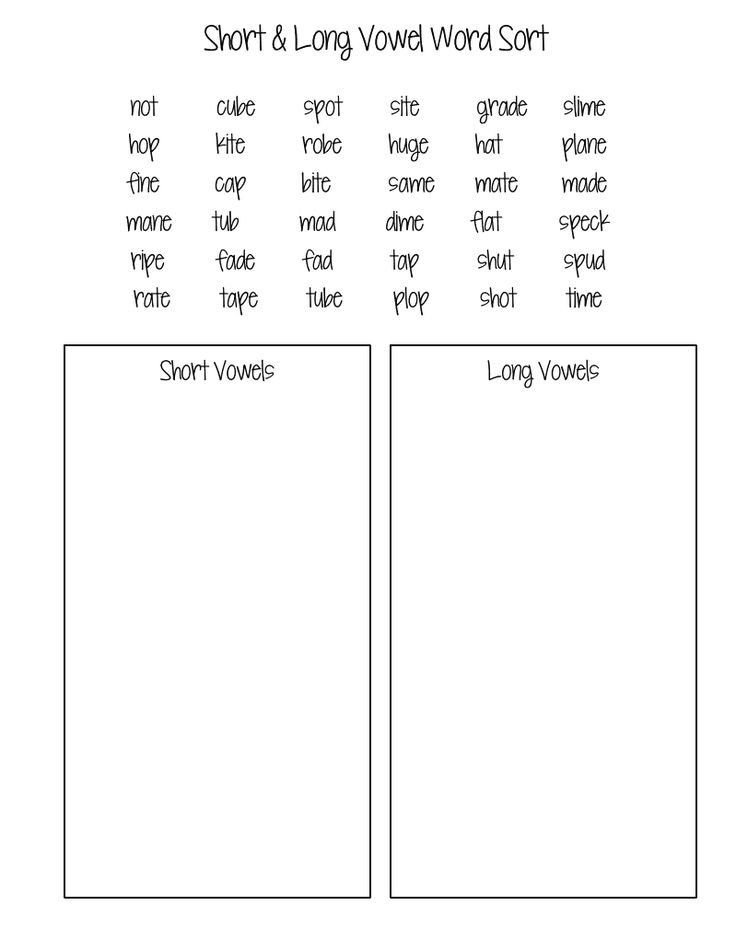 Allow different students to point to the Mini-Charts words while singing.
Allow different students to point to the Mini-Charts words while singing. - Using the Mini-Chart Templates, vary the order of vowels (Ex:short i, short a, short u, short e, short o) or vary short and long vowels in sequence (Ex: short a, long a, short e, long e, etc.)
- As a learning center task, have students match pairs of picture cards with the same vowel sounds (Ex: cat/hat, snake/rake). Note: At this point in their learning, it is easier for children to do this task if rhyming words are used. As they advance, they may be able to match short common vowels in pictures of non-rhyming words such as bag and bat.
Extensions:
- Introduce the Read-and-Sing Book, Oh, Do You Know?. The comical illustrations provide several examples of each sound in the song.
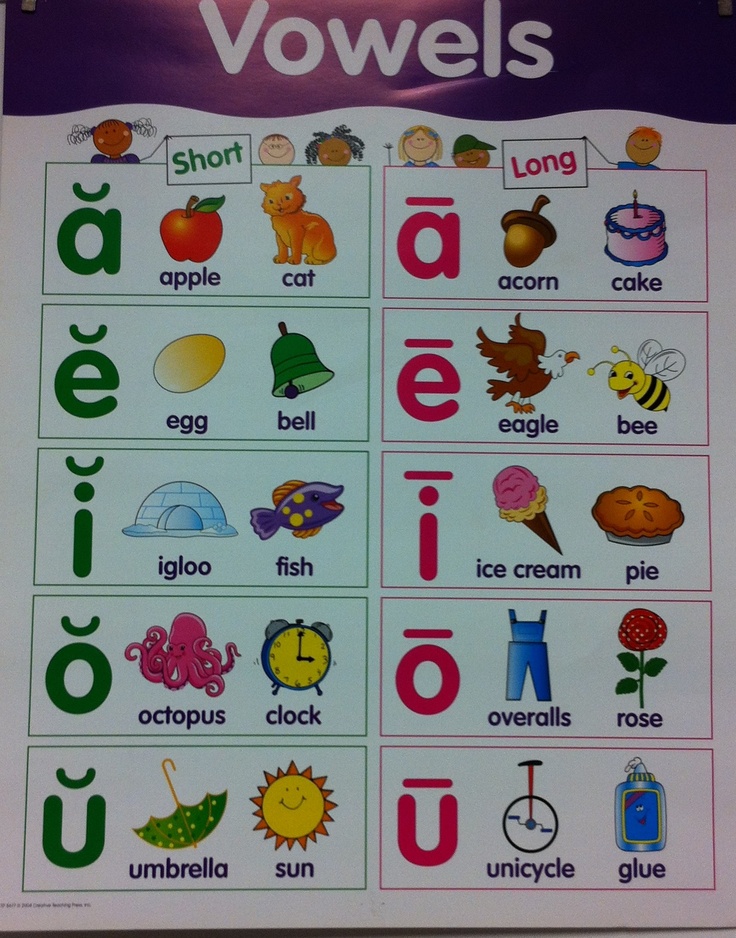 When children sing, "Oh, do you know the short a sound?", they can point to cats, apples, ants, an ax, a hat, and a basket. For long a, they will find Amos listening to the radio, holding a May calendar next to a table with cake, maple syrup, grapes, and plates. After children can remember all the vowel sounds, they can sing on their own with the instrumental version of the song and perhaps create their own short and long vowel pictures. They will also enjoy grouping objects that have the same vowel sounds or creating collages of magazine cut-outs. Keep a few copies of the book at a literacy center equipped with headsets so that students can gain practice in listening, singing, and remembering the sounds of the long and short vowels.
When children sing, "Oh, do you know the short a sound?", they can point to cats, apples, ants, an ax, a hat, and a basket. For long a, they will find Amos listening to the radio, holding a May calendar next to a table with cake, maple syrup, grapes, and plates. After children can remember all the vowel sounds, they can sing on their own with the instrumental version of the song and perhaps create their own short and long vowel pictures. They will also enjoy grouping objects that have the same vowel sounds or creating collages of magazine cut-outs. Keep a few copies of the book at a literacy center equipped with headsets so that students can gain practice in listening, singing, and remembering the sounds of the long and short vowels. - Using 3-letter or 4-letter words, explain the rule that when one vowel is in the middle of a word, it is usually short (Ex. bag, sit, bed). Print some of these words on a word wall. Pointing to an appropriate word, perform this rap to reinforce the short vowel rule: "Got one vowel in the middle of the word, got one vowel in the middle of the word, got one vowel in the middle of the word--Say /ă/, say /ă/, say /ă/ [clap-clap].
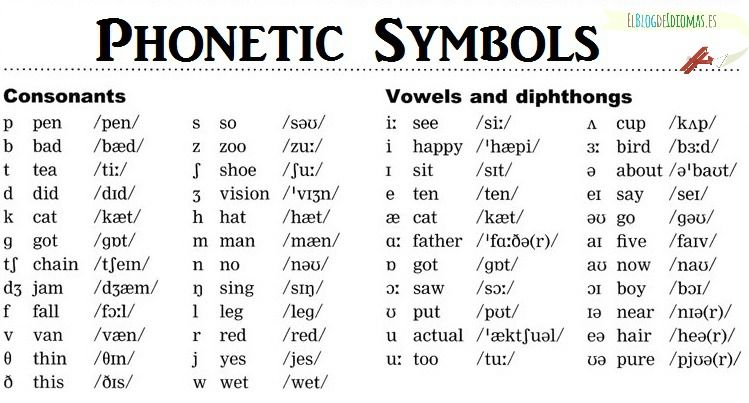 Repeat by pointing to another appropriate word and another short vowel sound until all short vowel sounds have been covered. Variations: Add back and forth side-steps while reciting the rap. Change the ending claps to taps, stomps, or knocks. Add rhythm instruments to help keep the beat.
Repeat by pointing to another appropriate word and another short vowel sound until all short vowel sounds have been covered. Variations: Add back and forth side-steps while reciting the rap. Change the ending claps to taps, stomps, or knocks. Add rhythm instruments to help keep the beat. - Find short vowel words in children's books and poems. Examples: From Shel Silverstein's Poetry in Where the Sidewalk Ends-Ickle Me, Pickle Me, Tickle Me, Too for short i; Jimmy Jet and his TV Set for short e. Singing games like The Banana Song (using the name Anna). Dr. Seuss' There's a Wocket in my Pocket and Fox in Sox for short o. Nursery Rhymes like Jack Sprat for short a; Diddle Diddle Dumpling for short i, short u, short o, and short e; Hickety-Pickety for short i and short e.
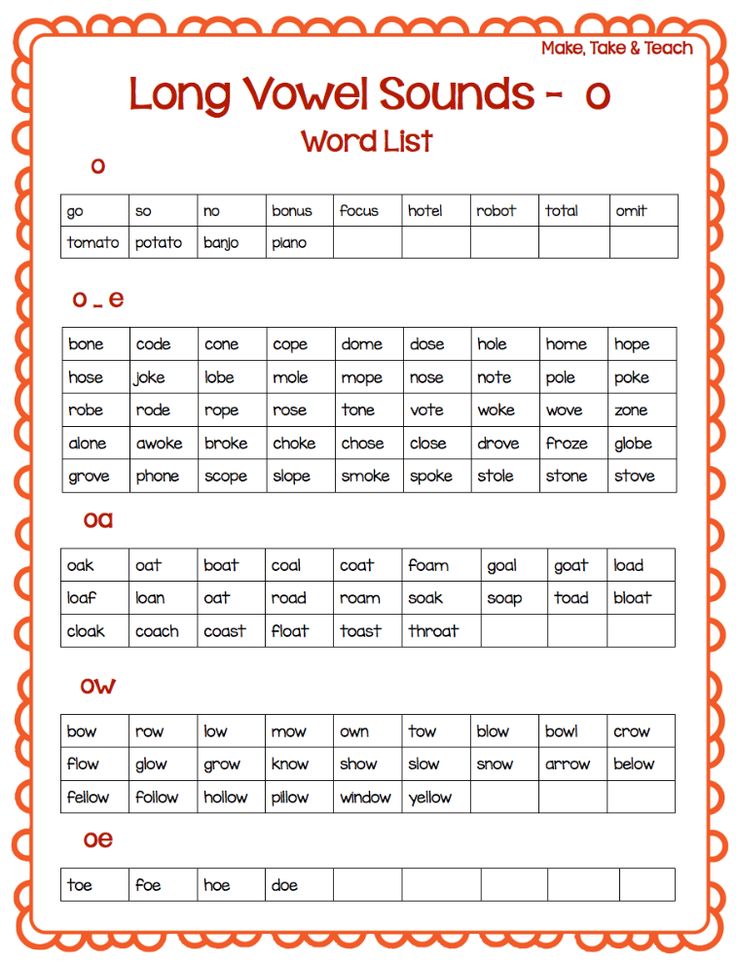
- Find short and long vowel sounds in students' names. Ex. Ann, Ellen, Jim, John, Buddy for short vowels; Jake, Steve, Mike, Joan, and Judy for long vowels.
- Find short and long vowel sounds in environmental words like Exit, Stop, Bus, In. Label classroom objects that illustrate short and long vowel sounds: dĕsk, chāir, tāble, gāme, pĕncils, pĕns, pāper, shĕlf, răck, lĕdge, ēasel.
- Have a Show-and-Tell time where children bring in objects with a particular short or long vowel sound. Place these or other objects on a table labeled with that vowel and the short or long symbol.
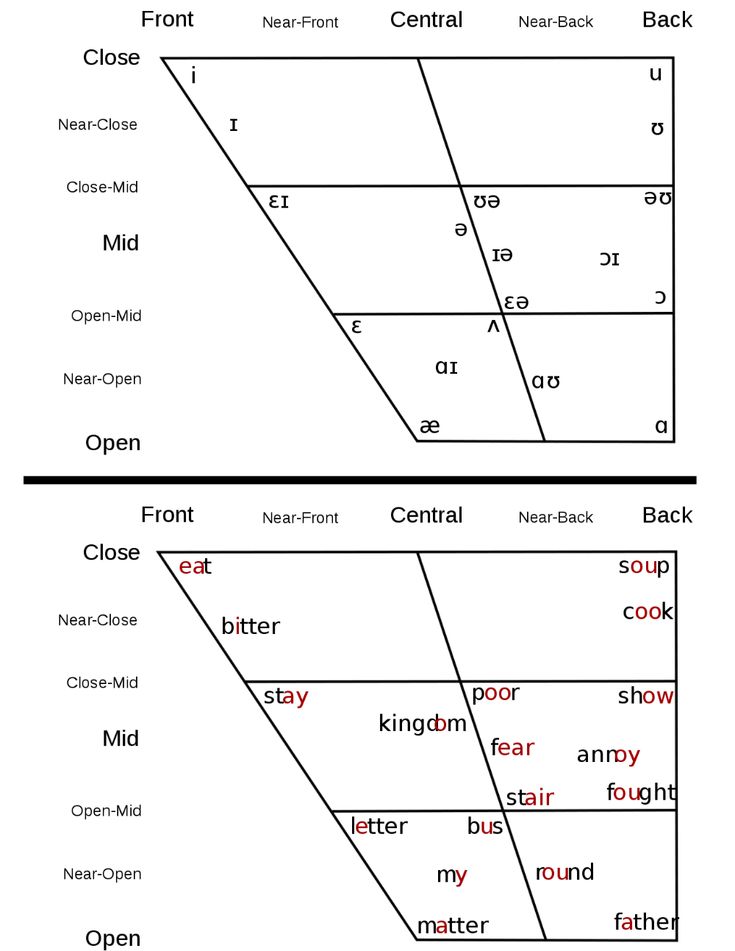
Evaluation:
- Students can produce the correct short vowel and long vowel sounds on Mini-Charts pp.41-46 without assistance.
- Students pass a written or manipulative test where they match pairs of short vowel pictures and long vowel pictures.
Order our cost-saving Sing Your Way Through Phonics Volume 1 Combo online ($33.95) containing the CD, Mini-Charts, Song Lyrics, and Teaching Suggestions — everything you need for this lesson! Or, print out an order form to mail/FAX to us.
Diacritical Marks – SpellPundit
A frequently asked question from any aspiring speller is “How do you know the correct pronunciation of a word?” The Merriam-Webster dictionary has a system of pronunciation symbols (also called diacritical marks or diacritics) that will tell you how to pronounce the word. In any dictionary entry, the pronunciation symbols will be right next the spelling of the word.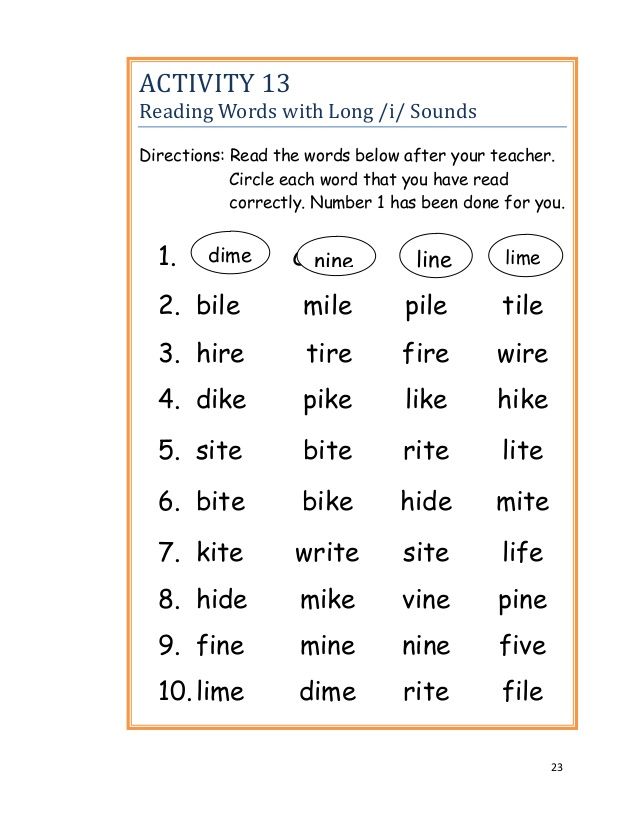
(You can find a complete list of all Merriam-Webster pronunciation symbols at http://unabridged.merriam-webster.com/info/pronsymbols.html ).
Learning all these symbols may be overwhelming for new spellers. In this post, we will break down this list of pronunciation symbols so you will become a master in reading diacritical marks!
Schwa (pronounced /shwä/): ə
One of the most common diacritics is the schwa, which looks like an upside-down e (ə). This is a neutral vowel sound, pronounced like “uh,” as in banana, circus, and collect. This is often the hardest sound for a speller to figure out because it can be spelled with any vowel: a, e, i, o, u, or even y.
Short Vowel Sounds: a, e, i, o, and u
Whenever there is a plain vowel with no marks on it, it is pronounced with a short sound.
Short vowel sounds:
a- “aa” sound as in had or cap
e- “eh” sound as in set or head
i- “ih” sound as in mitten or sip
Macron (pronounced /mā-ˌkrän/): ā, ē, ī, ō
A macron is a straight line ( − ) that is placed over a vowel.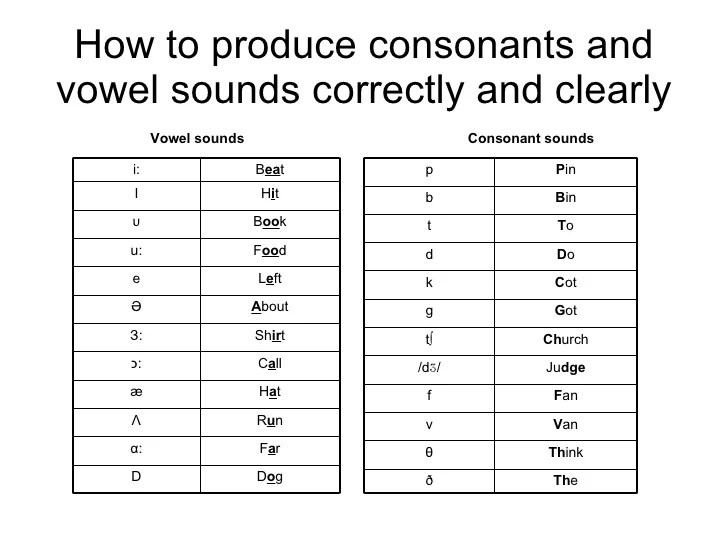 This symbol gives a vowel a long sound.
This symbol gives a vowel a long sound.
Long vowel sounds:
ā- “ay” sound as in day
ē- “ee” sound as in bead
ī– “ii” sound as in site
ō- “oh” sound as in snow
Diaeresis (also spelled dieresis, pronounced /dīˈerəsəs/): ä and ü
A diaeresis is two dots (..) that are placed on top of a vowel. A diaeresis is used when the vowel ‘a’ or ‘u’ are pronounced like they are “stretched out”.
ä- “ah” sound as in bother or cot
ü- “oo” sound as in moose or rule or shoe
In German words, these two dots can also be called an umlaut. An umlaut is used when a German vowel is pronounced like a mix of two vowel sounds. One example is the word kummel, which is pronounced /kiməi/. Notice how the letter ‘u’ in kummel is pronounced like a short ‘i,’ that’s how an umlaut works.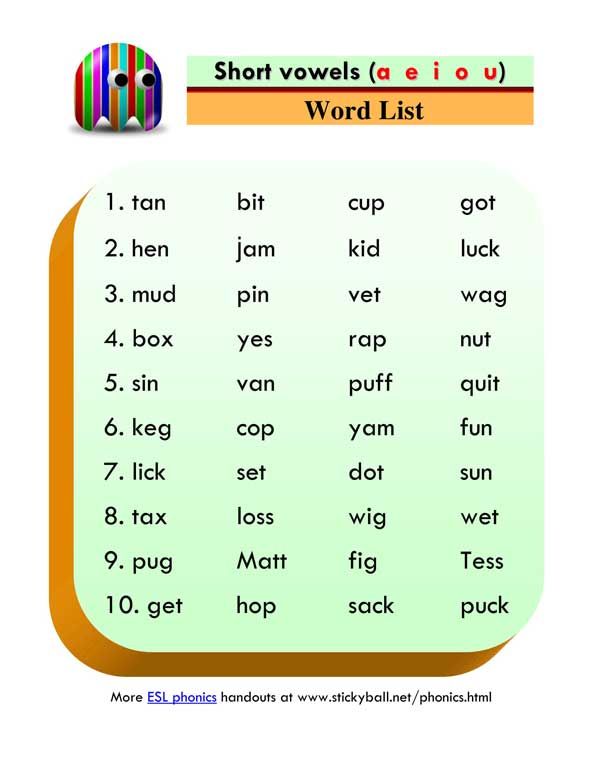
Stress Symbols: ‘ and ,
Stress symbols tell you which syllable of the word has the most stress, or emphasis. If a syllable is stressed, that means you put some extra force or pressure as you say that syllable. Stressed syllables are pronounced slightly louder and longer than unstressed syllables.
The diacritical mark (‘) indicates primary stress. This means that you put the most stress, or emphasis, on the syllable that comes right after this mark.
The diacritical mark (,) indicates secondary stress. This means that the syllable after this sound also has some stress, but it is not as much as the primary stress.
Stress on the word can make all the difference in what it means. For example, the word “present” can have two different meanings depending on where you put the stress.
Additional Symbols:
ŋ- “ng” sound as in sing
au̇- “ow” sound as in out
ȯi- “oy” sound as in boy
Now let’s take a mini-test! Read the pronunciations and try to guess what the word is.
jəˈra|f
də-ˈmä-krə-sē
nash-nəl
By learning how to read pronunciation symbols, you can learn how to correctly pronounce every word in the dictionary, which will help you in spelling bees. With some experience, you will be able to read these pronunciation symbols so quickly that they will become like a second language, and you will be able to practice words faster.
Please send your questions to [email protected].
Pronunciation of long and short English vowels
If there is the most terrible beast in English phonetics, then for the vast majority of us it is English vowel sounds, or rather their duration. The main reason long and short vowels in English give us so much trouble is simple - we don't understand them. We do not understand how to pronounce them correctly and how to confidently distinguish them in speech. We can be understood, because the duration of the sound is a subjective thing. Do not measure it with a stopwatch! Do the British themselves rely solely on the duration of the sound? Of course not! nine0003
Struggling for quality
First, all English vowels differ qualitatively.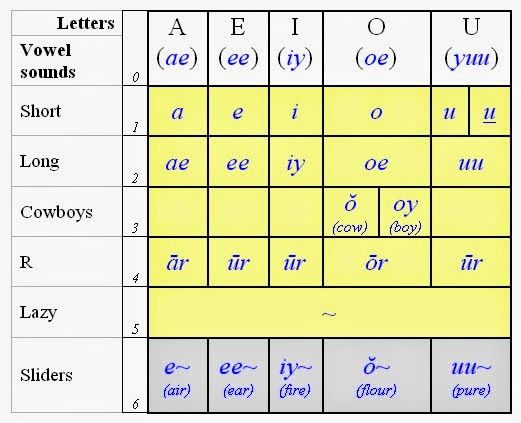 For a beginner, this difference may not be obvious, however, the more clearly you remember this fact, the faster you will learn to determine this qualitative difference. Pay attention to the transcription of short [ɪ] and long [iː] English "and". Yes, a colon is added to the long sound, but the main character is not the same - precisely in order to reflect the difference in the quality of the sound, and not just in its longitude. Here, however, there are several unpleasant nuances at once. nine0003
For a beginner, this difference may not be obvious, however, the more clearly you remember this fact, the faster you will learn to determine this qualitative difference. Pay attention to the transcription of short [ɪ] and long [iː] English "and". Yes, a colon is added to the long sound, but the main character is not the same - precisely in order to reflect the difference in the quality of the sound, and not just in its longitude. Here, however, there are several unpleasant nuances at once. nine0003
First, a lot depends on transcription. There are several systems of phonetic transcription. Here we are talking about IPA (International Phonetic Alphabet), the most authoritative system in the world and generally accepted in Russia. But even in the IPA, for the time being, both long and short English "and" - more precisely, their basis - were denoted by the same symbol.
Secondly, the degree of this qualitative difference itself varies greatly for different vowel pairs. For example, if the long "a" in "cart" is radically different from both "cut" and "cat" and "cot", then the difference between "pool" and "pull" is not so pronounced. nine0003
nine0003
Thirdly, regional accents further confuse the situation (and there are hundreds of them in England alone). The Scots, for example, distinguish between "pool" and "pull" solely by context, that is, even the length of the sound they have in this pair is the same.
A look through the looking-glass: lax and tense
And what to do now? Look at the problem from the other side, from English! To be fair, the English also sometimes refer to their vowels as long and short. However, in more or less academic sources, vowels are divided not into long-short ones, but into "lax" and "tense", i.e. relaxed and tense. Now we will figure out what in this case relaxes and tenses. nine0003
Keep in mind that if you pronounce long and short vowels correctly, it will be much easier for you to distinguish them by ear. Now, the main reason for the problems and misunderstanding of English vowels is that we think of them as long and short. But how else to think about them, if they are long and short, you ask.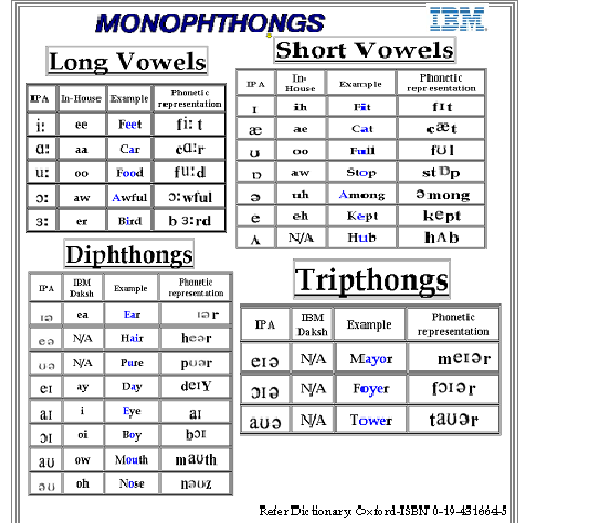 “They told us about it at school,” right? Strictly speaking, the duration of "long" vowels can vary widely, so that even the term itself is not entirely accurate. Much worse, however, is that we are trying to artificially lengthen or shorten these vowels. And folk wisdom says: if you have to imitate, then something is wrong. nine0003
“They told us about it at school,” right? Strictly speaking, the duration of "long" vowels can vary widely, so that even the term itself is not entirely accurate. Much worse, however, is that we are trying to artificially lengthen or shorten these vowels. And folk wisdom says: if you have to imitate, then something is wrong. nine0003
Bubbles and colors
We have already noted that the correct position of the tongue often automatically leads to the correct pronunciation. Developing this thought, the length or brevity of the vowel is an effect, not a cause.
So, the first thing to do is to bring the tongue into the correct position. The analogy with a hot potato in your mouth is appropriate, just place the potato not on the tip of the tongue, but closer to the root. Let me remind you that as much as this situation is unusual for us, it is just as natural for the British. That is, the tongue should be relaxed in this position (remembered about "lax"). Now imagine a bubble rising from the bottom of the lake.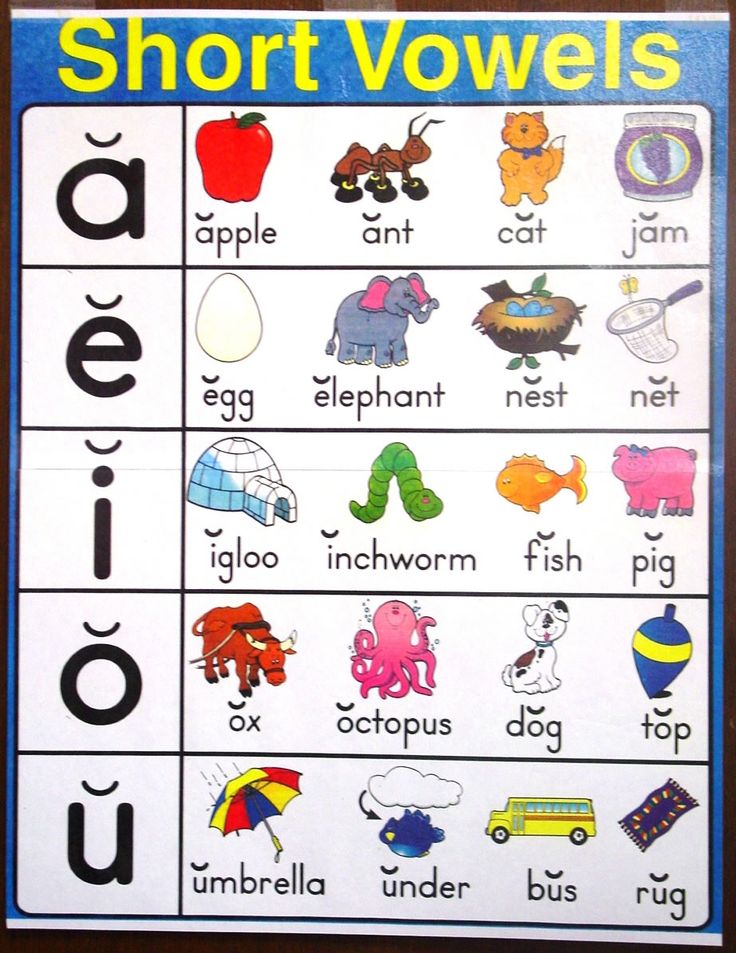 The sound made by the bursting bubble is as short as possible - bang! - as soon as it touches the surface of the water, the pressure inside the bubble instantly dissipates. Short vowels are pronounced similarly - put, book, cut, bit, etc. To maintain the sound of such a vowel, no additional effort is applied - this is "lax". nine0003
The sound made by the bursting bubble is as short as possible - bang! - as soon as it touches the surface of the water, the pressure inside the bubble instantly dissipates. Short vowels are pronounced similarly - put, book, cut, bit, etc. To maintain the sound of such a vowel, no additional effort is applied - this is "lax". nine0003
When pronouncing long vowels - on the contrary - air pressure on the ligaments maintains the sound for some time. In this case, at the root of the tongue you will feel a slight tension. These two moments are "tense". Thanks to them, the sound acquires a noticeably more pronounced character than that of short vowels. You can compare this to the color saturation of paints - "tense" colors are bright and saturated, while "lax" colors are closer to shades of gray.
Whoever seeks is always
Work on pronunciation is a search. We try to repeat what we hear this way and that, until one day we suddenly understand how this or that sound is actually pronounced and, most importantly, why.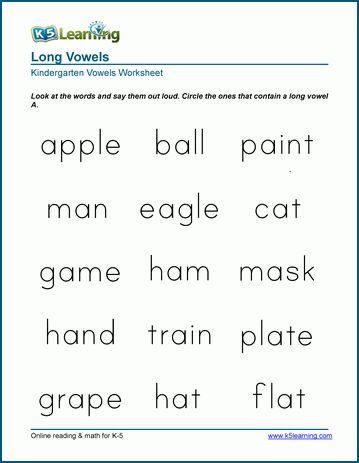 And so many times. Here I have offered you a little hint. Armed with it, start paying attention to how English vowels are pronounced by native speakers themselves, and be sure to try to repeat after them. And if you have any questions feel free to ask them in the comments. You can also subscribe to our English Pronunciation Course for free, which will greatly speed up your progress. nine0003
And so many times. Here I have offered you a little hint. Armed with it, start paying attention to how English vowels are pronounced by native speakers themselves, and be sure to try to repeat after them. And if you have any questions feel free to ask them in the comments. You can also subscribe to our English Pronunciation Course for free, which will greatly speed up your progress. nine0003
Vowel sounds and letters. How many are there in Russian?
We will teach you how to write without mistakes and tell stories in an interesting way
Start learning
The correct pronunciation of words is one of the components of beautiful and literate speech. To achieve this, you will first have to study the sounds themselves. In this article, we will figure out together what vowel sounds are, how many vowels are in the alphabet of the Russian language, and what sounds they can represent.
What are vowels and sounds
Vowel sounds are those sounds that we freely convey with our voice. Hence their name comes from: voice means "voice". When pronouncing, air exits through the mouth and does not create noise, and the position of the tongue and lips determines which vowel sound we will pronounce.
There are much fewer vowels in Russian than consonants. There are 6 of them in total: [a], [o], [i], [s], [y] and [e]. To understand whether a vowel sound is in front of you or not, try to sing it. For example:
-
a-a-a ,
-
woo
-
s-s-s .
If it works, then the sound is a vowel. You can't do that with consonants.
There are more vowels than sounds - there are 10 of them: a, i, u, u, o, e, e, e, i, s .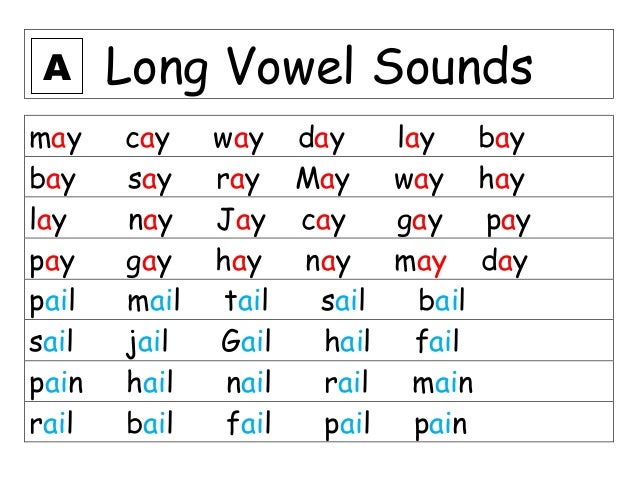 This difference is due to the fact that some of these letters can represent two sounds and are pronounced using a combination of a vowel and a consonant [y']. For example, in word spruce the letter e expresses two sounds - [y'] and [e]. Let's look at the table all the vowel sounds and the letters that represent them.
This difference is due to the fact that some of these letters can represent two sounds and are pronounced using a combination of a vowel and a consonant [y']. For example, in word spruce the letter e expresses two sounds - [y'] and [e]. Let's look at the table all the vowel sounds and the letters that represent them.
| Letter | Sound | Example |
|---|---|---|
| a | [a] | pharmacy |
| i | [a] [d'] + [a] | change anchor |
| at | [y] | moon |
| [y] [y'] + [y] | love skirt | |
| about | [o] [a] | horse milk |
| e | [e] [th'] + [e] [and] | victory raccoon great |
| e | [o] [d'] + [o] | rope hedgehog |
| e | [e] | evolution |
| and | [and] [s] | caviar life |
| s | [s] | choice |
Demo lesson in Russian
Take the test at the introductory lesson and find out what topics separate you from the "five" in Russian.
How vowel sounds are related to syllables
Vowel sounds form syllables - sound segments of words that we pronounce with one breath. One syllable can be either a vowel with one or more consonants, or a vowel alone. There is even a rule by which syllables can be counted: how many vowels in a word - so many syllables. nine0003
For example, in the word journey there are 5 vowels: [u], [i], [e], [i] and [e]. This means that it has 5 syllables: p-te-she-stv-e .
Test yourself!
Count the number of syllables in the words: try on, tanner, well-groomed, care, prefix, capital, wet, invitation, orange .
Vowel sounds and stress
Now let's see what groups vowel sounds are divided into. Sometimes their pronunciation depends on whether the stress falls on them, that is, whether we single them out with our voice. So vowel sounds are divided into stressed and unstressed. Here are some examples:
Here are some examples:
| | | |
|---|---|---|
| | | |
| | | |
| | | |
Stress in Russian can fall on any of the existing vowel sounds. However, only 4 of them can be unstressed - these are [a], [i], [y] and [s]. In this position, we pronounce sounds weaker than under stress, because of which they can change qualities and sound differently.
Interestingly, the vowels [o] and [e] can only be stressed. There are only a couple of exceptions to this rule: for example, in words cocoa and canoe sounds [o] and [e] in an unstressed position.
How unstressed vowels are related to consonants
How an unstressed vowel sounds depends on the consonant that precedes it. Or rather, from its hardness or softness. If it is a hard consonant, it can be followed by unstressed vowels [y], [a] and [s]. When we talk about a soft consonant, it is followed by unstressed vowels [y] and [and].
| | |
|---|---|
| | |
| | |
| | |
Test yourself
It's time to find out if you now understand well what vowel sounds are in Russian.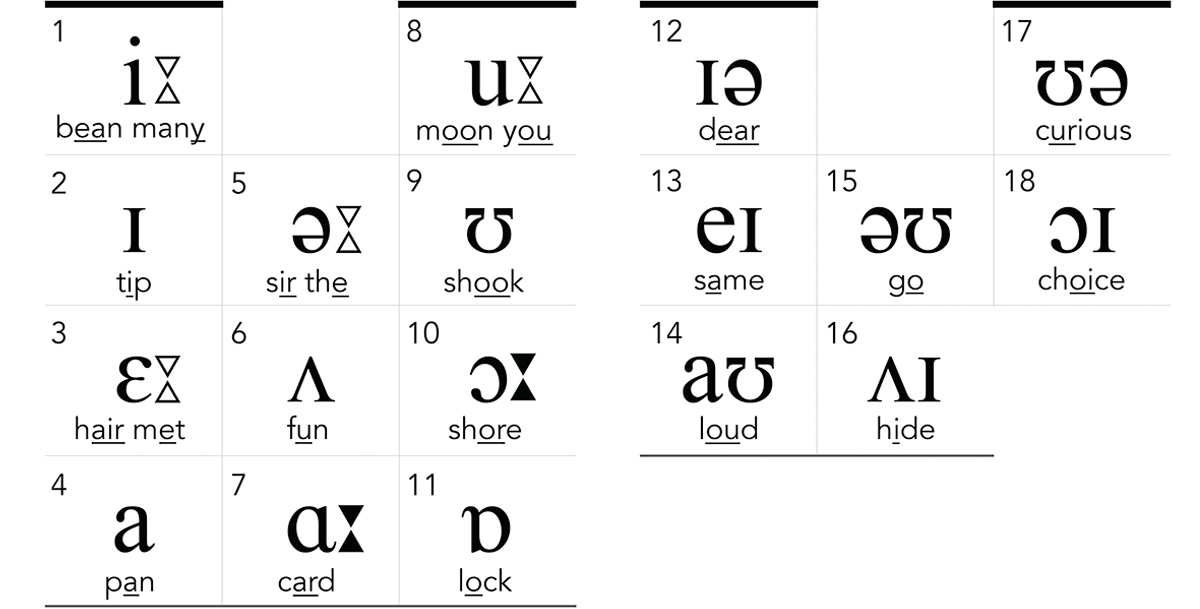 To do this, we have prepared tasks for self-examination. nine0003
To do this, we have prepared tasks for self-examination. nine0003
Task 1
List all the vowels in these words:
fair,
rejoice,
doll,
distant,
buddy,
voting,
mirror,
story,
OK,
captivate.
Task 2
Name 5 words each in which the sounds [a], [i], [y] and [s] would be stressed.
Task 3
Name 5 words in which an unstressed vowel would come after a hard consonant, and 5 more words where it would follow a soft consonant.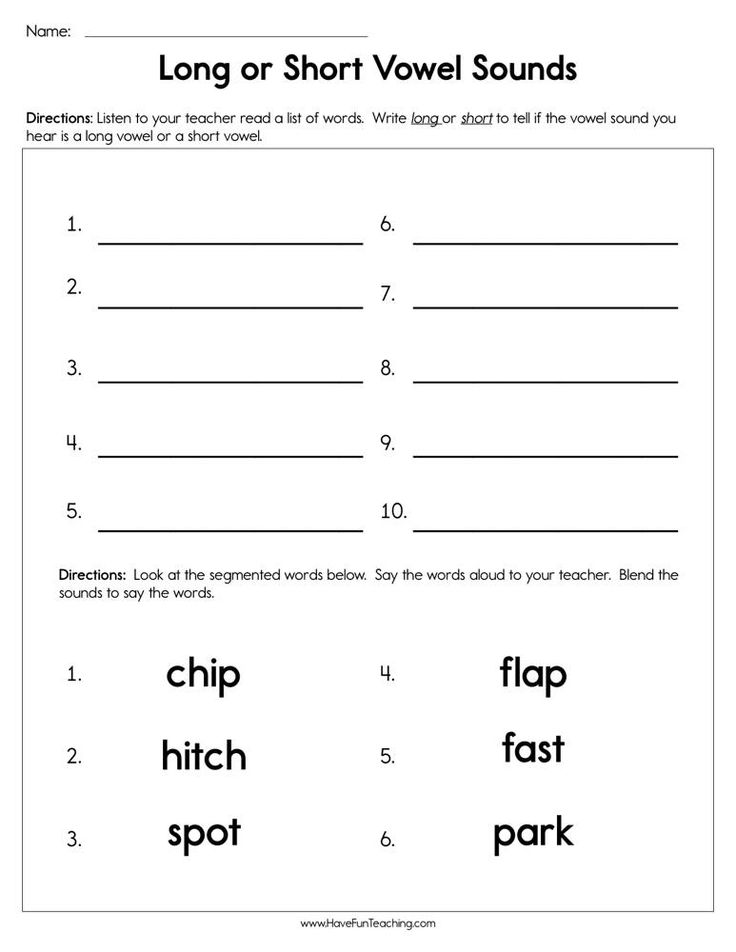
Task 4
Count the number of syllables in the words below (don't forget to use the rule you learned at the beginning of the article!):
-
weightless,
-
sunrise,
-
adventure,
-
painter,
-
perpetuate,
-
nice,
-
image,
-
category,
-
exciting,
-
melting,
-
snowflake.
The rules of phonetics help us to speak correctly, so it is important to master the topic of vowels well and avoid gaps in knowledge.

